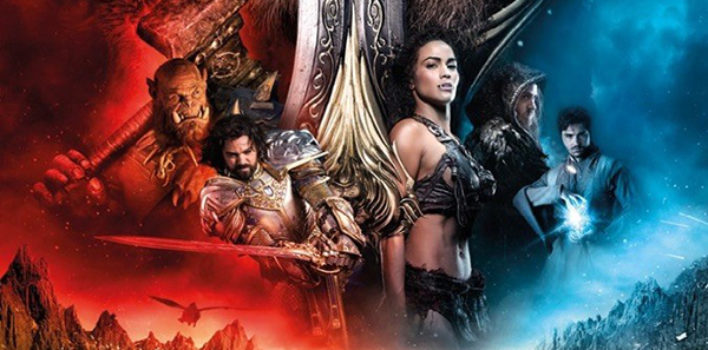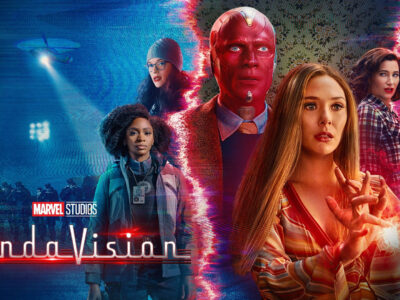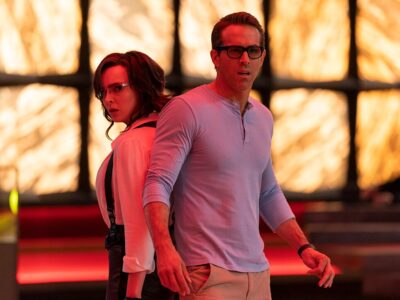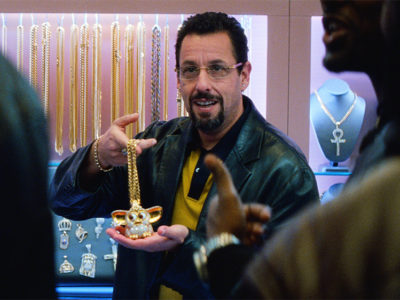Review| Warcraft
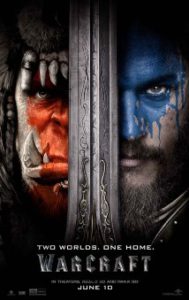 The Summer movie season rolls along and it seems like the films keeping getting bigger and bigger! This past weekend we had the opportunity to experience Warcraft, a film that, even before it came out, had the potential to be more polarizing than any other film this Summer. On one hand, it’s based on a video game and the video game-to-movie track record is atrocious. On the other hand, Warcraft is a film that has been brewing for twenty years. That’s twenty years of lore and world-building. It definitely has substance compared to other video game franchises, but is that enough to shake the stigma?
The Summer movie season rolls along and it seems like the films keeping getting bigger and bigger! This past weekend we had the opportunity to experience Warcraft, a film that, even before it came out, had the potential to be more polarizing than any other film this Summer. On one hand, it’s based on a video game and the video game-to-movie track record is atrocious. On the other hand, Warcraft is a film that has been brewing for twenty years. That’s twenty years of lore and world-building. It definitely has substance compared to other video game franchises, but is that enough to shake the stigma?
I would love to say that I have a definitive answer for you, but I really don’t. Critics have not liked the film at all, while many fans of the games have had their big screen itch satisfyingly satiated. The tension is evident by the Rotten Tomatoes‘ critic (26%) and audience (82%) scores. Can a movie that bad be enjoyed this much? Are critics being too harsh on “another video game film” or are audiences just being duped into liking a film because of all the “flashing lights and noises”– or nostalgia. I’d say, like many things, the answer lies somewhere in the middle. Let me explain…
Warcraft is not a great film. I would argue that it’s a good enough film. If you took the time to read my “Three Reasons to Go See Warcraft,” I still stand by it (and outed myself as somewhat of a fanboy). In that piece, I basically predicted that this film would let those people down who are not be familiar enough with the source material to forgive some of the cinema sins and and would not know to treat this film as part of something much larger. With that said, criticism of the film being too fast, disjointed, and, oftentimes, not giving enough depth to it’s characters or actions, is something that is totally valid. Hence, good enough.
I think the best way I can temper expectations for those who haven’t yet seen the film– and for those who may have been less than thrilled when the credits rolled– is to compare it to Fellowship of the Ring. I remember watching Frodo and Sam walk towards Mordor, our story just beginning, when the credits began to roll and the lights came up. There was a couple behind me that exclaimed, “What?! That’s it? It’s over! They’re not even there yet!” Obviously, this was not someone who was a huge fan of the books. They didn’t know that the movie was part of something larger (inexplicably). While Warcraft doesn’t take the time to let you sit with some of the characters long enough, it’s still an apt comparison because Warcraft is part of something much larger and was forced to create its world and establish its characters in much less time (Fellowship (Standard Edition) runs 178 minutes compared to Warcraft which runs 123 minutes) while only being the beginning. Again, good enough…
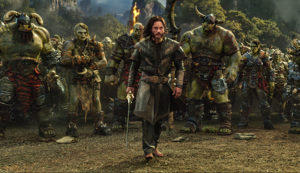 With the acknowledgment of its faults, I would be remiss not to point out where the film succeeds. Incredible effects and motion-capture aside, director Duncan Jones find a way to create an immersive, yet hectic, experience. The orcs look like orcs. The world looks fantastic. I want to go to there! Although we start our story with Durotan, Chief of the Frostwolf Clan, trying to figure out how he is going to lead his people to a world where they will have to start again, we get much more than that when he must negotiate this existence amongst our other players (King Llane Wrynn, Anduin Lothar, Garona, Ogrim, Medivh, Khadgar, and Even Gul’dan). Not only that, but we get to see the beginnings of a conflict that will continue in some shape or form for years (in Warcraft lore). The groundwork is set for two worlds to collide again and again. Two races (for now), must decide to set aside their differences and work towards a common good– a greater good– and their own survival. As the orcs would say, “Lok’tar ogar!” (victory or death!).
With the acknowledgment of its faults, I would be remiss not to point out where the film succeeds. Incredible effects and motion-capture aside, director Duncan Jones find a way to create an immersive, yet hectic, experience. The orcs look like orcs. The world looks fantastic. I want to go to there! Although we start our story with Durotan, Chief of the Frostwolf Clan, trying to figure out how he is going to lead his people to a world where they will have to start again, we get much more than that when he must negotiate this existence amongst our other players (King Llane Wrynn, Anduin Lothar, Garona, Ogrim, Medivh, Khadgar, and Even Gul’dan). Not only that, but we get to see the beginnings of a conflict that will continue in some shape or form for years (in Warcraft lore). The groundwork is set for two worlds to collide again and again. Two races (for now), must decide to set aside their differences and work towards a common good– a greater good– and their own survival. As the orcs would say, “Lok’tar ogar!” (victory or death!).
King Llane Wrynn: “If we do not unite to fight this enemy, our world will perish.”
How timely is this? We live in a world that is ravaged by terrorism– a world ruled by fear, self-protection, and paranoia. We easily forget who our neighbor is because we are too worried about ourselves and our safety to see our neighbors as anything but too old, or too young, or too affiliated with an opposing political party or religion. I had a friend comment on Facebook recently that one of the biggest issues we face today is that we too often hear sermons or sermonizing about “us vs them” when the reality is “there’s only us.” Maybe I am naive, but I really resonate with this. I would say that Christ did too when he told the parable of The Good Samaritan (Luke 10:25-37). I’m not saying it’s easy and I honestly don’t think Jesus was either, but it doesn’t change things. We don’t live on this planet alone and as much as we’d like to find ways to divide and section-off this piece or that group, we’re all in this together. We were made to actually NEED each other in a similar way to we see it exemplified in the Trinity. But it’s tough– nay, it’s almost impossible– to think of your neighbor above yourself. At least on our own. Sadly, The world of Azeroth does not seem to exist in a world where Christ was a hope for reconciliation, so they can only band together as best they know how, putting aside differences in order to not just survive, but to hopefully one day, thrive.
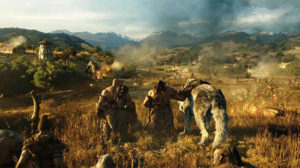 Ultimately, Warcraft disappoints those of us who wanted to be blown away by a perfect film. However, this film is incredibly successful at establishing a world that I want to revisit. A world of orcs, humans, dwarves, elves, and many other races that we have just begun to catch a glimpse of. It’s a world that has many lessons and stories to tell. The kind that a little over 12 million people have been exploring for a decade in the latest version (World of Warcraft). Much like I felt at the end of Fellowship of the Ring, I can’t wait to see where this world finds itself in subsequent films. But those films will only happen if we set aside our differences in movie critique-ery and let ourselves unify in supporting an epic fantasy world full of heroes and villains; of victory and loss; of varied races and backgrounds; of virtue and betrayal; of right and wrong. A world that oftentimes compels us because, at it’s core, it looks a lot like our own…
Ultimately, Warcraft disappoints those of us who wanted to be blown away by a perfect film. However, this film is incredibly successful at establishing a world that I want to revisit. A world of orcs, humans, dwarves, elves, and many other races that we have just begun to catch a glimpse of. It’s a world that has many lessons and stories to tell. The kind that a little over 12 million people have been exploring for a decade in the latest version (World of Warcraft). Much like I felt at the end of Fellowship of the Ring, I can’t wait to see where this world finds itself in subsequent films. But those films will only happen if we set aside our differences in movie critique-ery and let ourselves unify in supporting an epic fantasy world full of heroes and villains; of victory and loss; of varied races and backgrounds; of virtue and betrayal; of right and wrong. A world that oftentimes compels us because, at it’s core, it looks a lot like our own…


